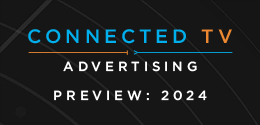-
upLynk Debuts Next-Gen HD Encoding Platform; Lands Disney/ABC
upLynk is debuting its HD Adaptive Streaming Platform this morning, a next-gen spin on encoding and playback which reduces content providers' capex and opex for delivering high-quality video to multiple devices. As validation of its approach, upLynk is also announcing that Disney is using upLynk for its ABC Player, ABC Family and Watch Disney TV Everywhere apps.
As the constellation of devices has grown, encoding has become an extremely complicated and costly process for content providers. As company CMO Ken Brueck explained in a call earlier this week, upLynk radically simplifies things by encoding video in the cloud just one time, in a non-proprietary adaptive format, which can then be played back on key platforms like iOS, Android, Windows 8, Roku and online. When upLynk-encoded videos cannot be played back natively, a code library is included with the stream that detects which format is needed and adapts to it on the fly.
A key benefit of this approach is that content providers don't need to worry about additional transcodes for new formats or the work necessary to optimize for those new formats because upLynk simply provides them the necessary code to be compatible. Ken sees this "future-proofing" as critical to upLynk's value proposition. As just one copy of the file is stored by upLynk, there are also no new storage costs for new formats. And one copy also means consistent analytics per piece of content.
For the content provider, working with upLynk begins by downloading a small app called "The Slicer" to any basic hardware. As video is added to The Slicer it is segmented into smaller chunks which are encrypted and uploaded to upLynk's cloud for encoding. The Slicer determines the optimal encoding settings and preserves closed captioning data. Encoding begins simultaneously for quick turnaround time for jobs to complete. This same process is applied to both on-demand and live, linear content.
upLynk has a SaaS-based business model, so content providers pay only on the basis on hours of content encoded, stored and streamed. Ken believes this approach allows content providers to more easily create business cases for their video because the elimination of multiple variables makes it more straightforward to estimate encoding costs.
In addition to its content focus, upLynk is also enabling server-side ad insertion. By eliminating client-side logic, there's no need to integrate ad servers with every platform. In addition to reducing upfront development fees and ongoing maintenance, it also streamlines the ad request/delivery process, thereby improving the user experience. Ad insertion can be done for both on-demand and live, linear content.
Ken said that Disney swapped out its home-grown encoding solution in favor of upLynk in early 2012 for its ABC Player and ABC Family Player, using some spare Linux boxes and the addition of inexpensive capture cards. The Watch Disney apps have run on upLynk since launch. The fact that Disney is relying on upLynk for such high-profile initiatives is certainly strong validation.
No doubt as more devices and formats come to market, and video becomes more strategic for content providers, encoding is going to become an even bigger headache. As such, upLynk's simpler, far less expensive solution should gain appeal.Categories: Encoding, Startups
Topics: upLynk


